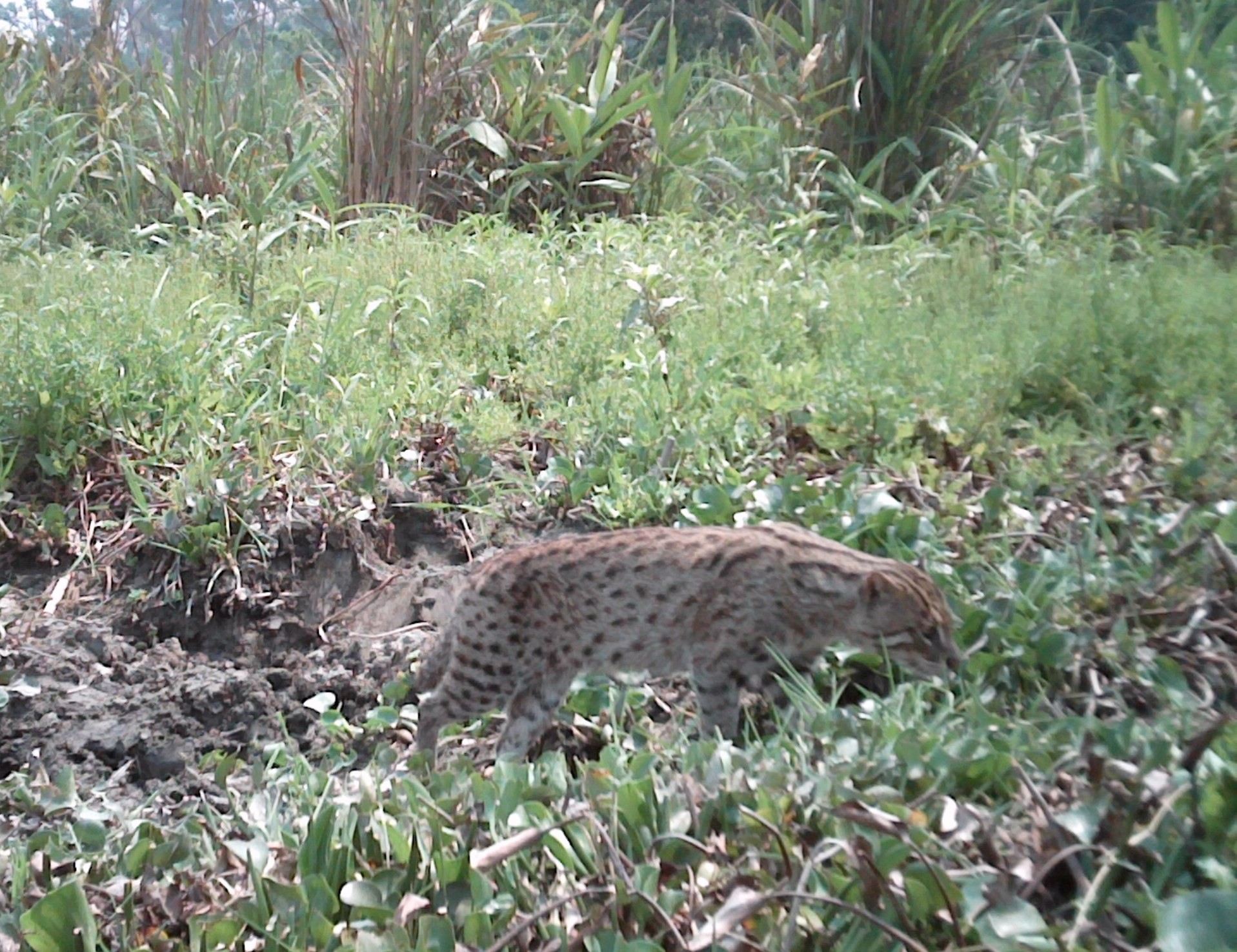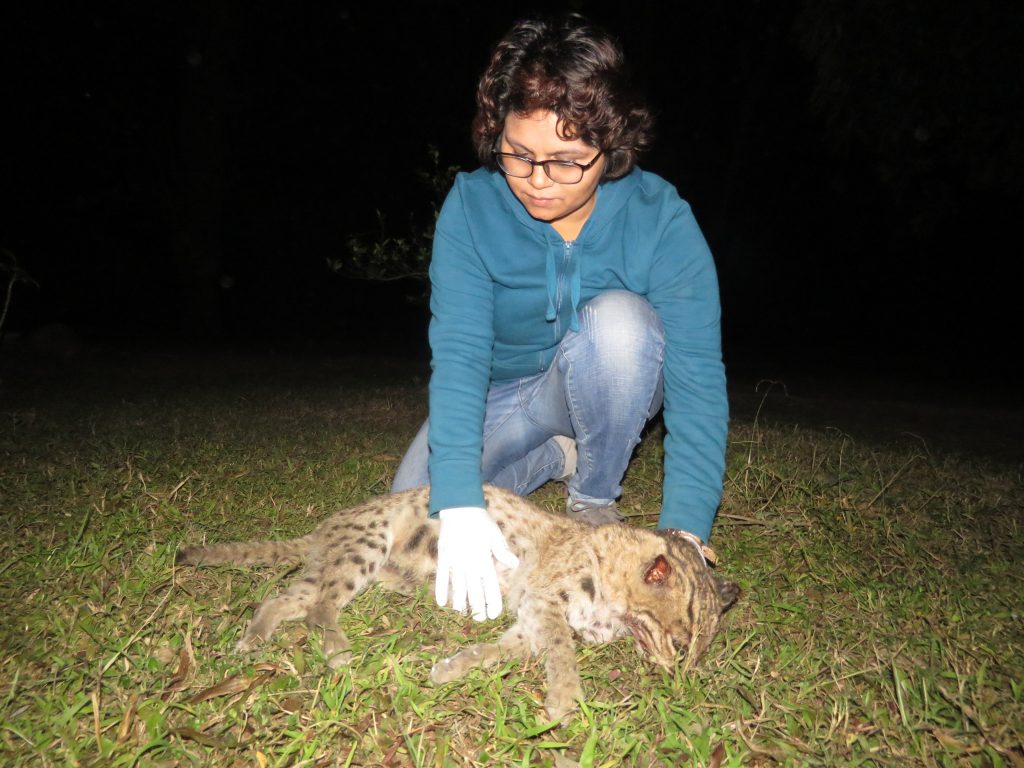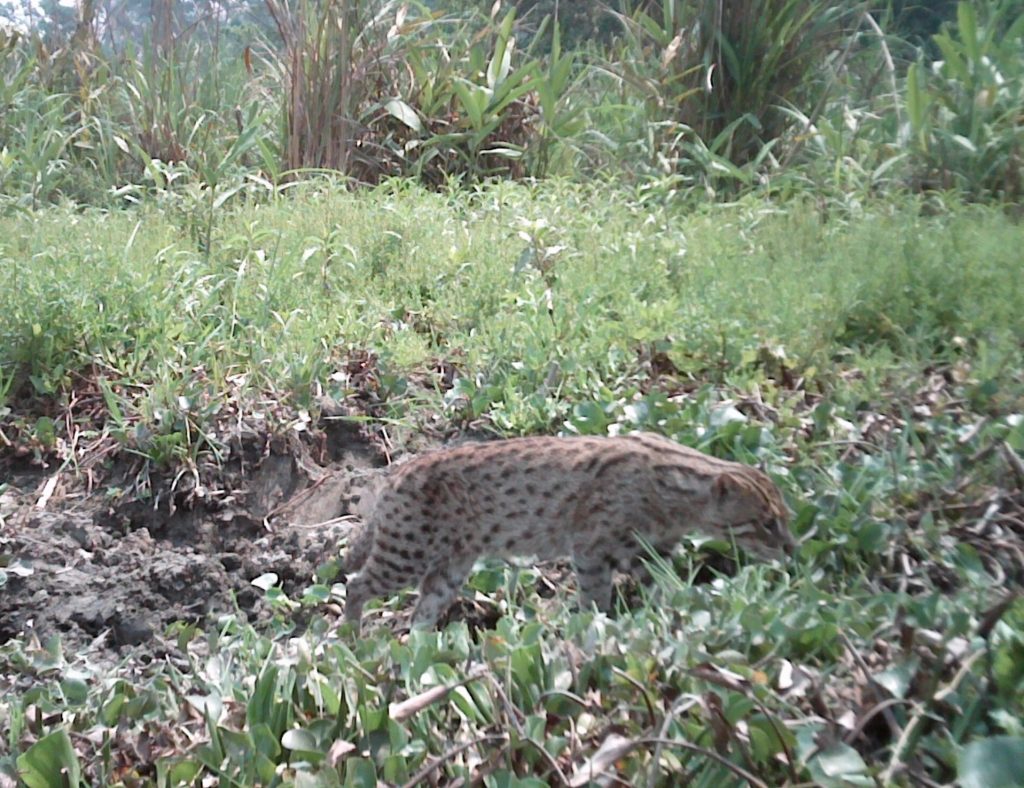Save Tigers but do not forget Fishing Cats


Tiger is the largest of 41 cat species in the world. Cats are specialized carnivores, primarily depending on other animals as their diet. All cats are mysterious, elegant adorable and unique. Some members of cat family, especially the large cats such as Tiger, Lion, Snow Leopard, Cheetah and Common Leopard are at the top of the list in conservation priority species. Out of 41 members of the cat family only 8 are categorized as the big cats, the remaining 33 (80%) of are small sized. Despite their variety of species and important role in ecosystem functioning as meso-carnivores, the small cats have received little attention for conservation.
 Nepal has exceptionally high diversity of wild cats with 12 species (nearly 30% of the world) including four big cats (Royal Bengal Tiger, Common Leopard, Snow Leopard and Clouded Leopard) and eight small cats (Eurasian Lynx, Asiatic Golden Cat, Fishing Cat, Jungle Cat, Pallas’s Cat, Leopard Cat, Marbled Cat and Rusty Spotted Cat). Cats occupy wide range of habitats in the elevation of between 65 m to 6000 m above sea level. Among these, five species of wild cats (Royal Bengal Tiger, Snow Leopard, Clouded Leopard, Lynx and Leopard Cat) are included in the protected species list (Appendix 1) under National Park and Wildlife Conservation Act 1973.
Nepal has exceptionally high diversity of wild cats with 12 species (nearly 30% of the world) including four big cats (Royal Bengal Tiger, Common Leopard, Snow Leopard and Clouded Leopard) and eight small cats (Eurasian Lynx, Asiatic Golden Cat, Fishing Cat, Jungle Cat, Pallas’s Cat, Leopard Cat, Marbled Cat and Rusty Spotted Cat). Cats occupy wide range of habitats in the elevation of between 65 m to 6000 m above sea level. Among these, five species of wild cats (Royal Bengal Tiger, Snow Leopard, Clouded Leopard, Lynx and Leopard Cat) are included in the protected species list (Appendix 1) under National Park and Wildlife Conservation Act 1973.
In Nepal, there were lots of conservation initiatives in the past and present for the large charismatic’s cats especially to tigers and snow leopards. There is a general belief that conservation action carried out for the large and wide ranging big cats will directly support the small cats and their prey base. In fact, big cats are able to prey on what they like (large to small) but small cats have to choose their prey relatives to their body size only. It is clearly understood from conservation programs and funding allocation that small cat are under less importance from both the conservation organizations and the government. In this situation small cats are under the shadow of big cats. Habitat specialist species fishing cat is one of the typical example of small cats demonstrating that conservation of tigers does not contribute conservation of their smaller cousins.
Fishing cat, can be called a wetland cat based on their dependence on wetlands (fish) for their diet. Similar to tiger, fishing cat is also ‘Endangered’ in Nepal based on the IUCN national redlist1. It is a small/medium body sized cat (body weight 4.5 - 16 kg) found distributed in some countries of South and Southeast Asia. Its patchy distribution throughout its range is believed for its strong association with wetlands. It is generalist in diet, consuming small mammals, reptiles, crustaceans, fish, birds, invertebrates, etc.
In Nepal fishing cats are distributed in the lowland of Terai. It was recorded from Sunsari in the East to Kanchanpur district in the far West. The distribution is not continuous within its range. Till now fishing cats were recorded from five protected areas of Terai namely Koshi Tappu Wildlife Reserve (KTWR), Parsa National Park, Chitwan National Park (CNP), Bardia National Park and Shuklaphanta National Park from East to West. Also it was recorded from outside the protected area in natural wetlands as well as fish ponds of Sunsari, Bara and Kapilvastu district. Fishing cat prefers ponds, lakes and marshes but also found around flowing water (rivers and streams) like the Babai, the Trijuga and the Koshi river.
The first ecological study of fishing cats was carried out in CNP in the late 1980s by the team National Trust for Nature Conservation (NTNC) and an American scientist (David Smith). During that period radio collar was put on the neck of fishing cats (3 females and 1 male) and tracked regularly via receiver to understand the ecology and behavior of cats. It showed that fishing cats used the habitat covering dense grasslands vicinity to wetlands. Furthermore they also came up with the idea that the home range of a male fishing cat (16–22km2) overlapping with the home range of three female fishing cats (4–6 km2).
The guesstimated fishing cat population in Nepal is 150–200 individuals1 which is less than the recent population of 235 tigers3 in Nepal. The ignorance of small cats is such that their population is not based on actual research but only expert guess. A systematic camera trapping survey carried out in CNP in 2012 with the collaboration of Department of National Parks and Wildlife Conservation, NTNC, and the Panthera Small Cats Action Fund shows a minimum of five individuals4 of fishing cats in Chitwan NP. Similarly, camera trapping survey in Koshi (2016 and 2017) carried out by NTNC in collaboration with DNPWC and funded by Taronga Zoo of Australia found only 17 individuals5 of fishing cats. This is much less than the previously expected. Except this, Nepal lacks the information about the status on population of fishing cats. But it is well understood that the fishing cat is a very rare species in Nepal. Realizing its critical status, the updated management plan of KTWR included it as a priority species for conservation together with other six species (Wild Water Buffaloes, Dolphin, Fishing Cat, Bengal Florican, Swamp Francolin, Turtle Species and Gharial Crocodile) in Koshi. Similar to Koshi, it should be taken as a priority species throughout its range.
Globally fishing cat is under threats to high risk of extinction. Wetland conversion leading to habitat loss of fishing cats, retaliatory killing as pest species, poaching for fur and climate change are the major threats. For instance 27 fishing cats in West Bengal6 killed in a year and 30 were killed in Bangladesh6 in three years. In Nepal we don’t have the information on death of fishing cats. This is not because there is no threat but because we have very few fishing cats and its sighting is very rare. All the cases of deaths are also not documented or remain unreported. There are some cases of fishing cat death found in Nepal caused by domestic guard dogs, snaring and poisoning by local people, killed for bushmeat by tribal communities and road kills. Also there was a record of fishing cat death suspected by a large carnivore in CNP.
The survival of fishing cat directly depends on protection of the remaining wetlands in its range countries including Nepal. A study of fishing cat in Thailand7 has shown that by regulating the killing activities by locals and certain the protection of resources to fishing cats like food and resting sites will ensure the persistence of fishing cats in human dominated areas. Nepal is rich in water resources, with lots of wetlands in the form of rivers, ponds, lakes and agricultural lands including paddy farms and aquaculture. These wetlands area extends temporarily in the monsoon period where there is heavy rain fall. All the protected areas in the Terai including its buffer zone provides the suitable habitat for the movement of fishing cats towards the human dominated areas. So in this scenario it is urgent to focus in the threat mitigation of endangered fishing cats for its long existence in the country.
1 Jnawali et al. 2011. The Status of Nepal's Mammals: The National Red List Series.
3 DNPWC & DFSC. 2018. Status of Tigers and Prey in Nepal 2018.
4 Mishra R. 2013. Conservation Status of Fishing Cat in Chitwan National Park, Nepal
5 NTNC. 2017. Evaluating the relationship between Fishing Cats Prionailurus viverrinus and aquaculture: A case study in Koshi Tappu Wlidlife Reserve, Nepal.
6 Mukherjee et al. (2016). Prionailurus viverrinus. The IUCN Red List of Threatened Species
7 Cutter P. (2015). Fishing Cat Ecology: Food Habits, Home Ranges, Habitat Use and Mortality in a Human-Dominated Landscape around Khao Sam Roi Yot Area, Peninsular Thailand
Mishra is a PhD Candidate, University of Antwerp, Belgium. She is currently involved in Wildlife Conservation Association Nepal (WildCAN), Kathmandu, Nepal

 Nature Khabar
Nature Khabar




Feedback